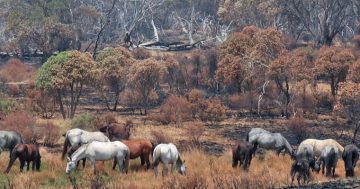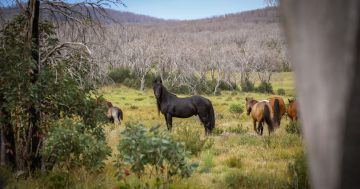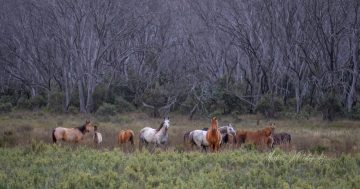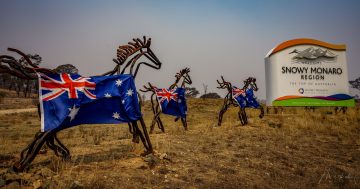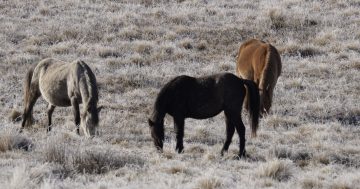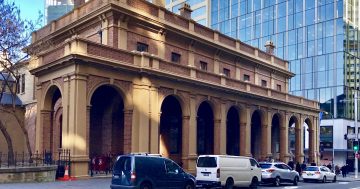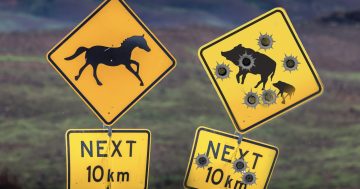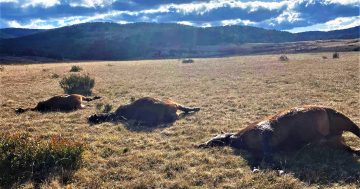WARNING – The images provided below could be distressing to some of our readers.
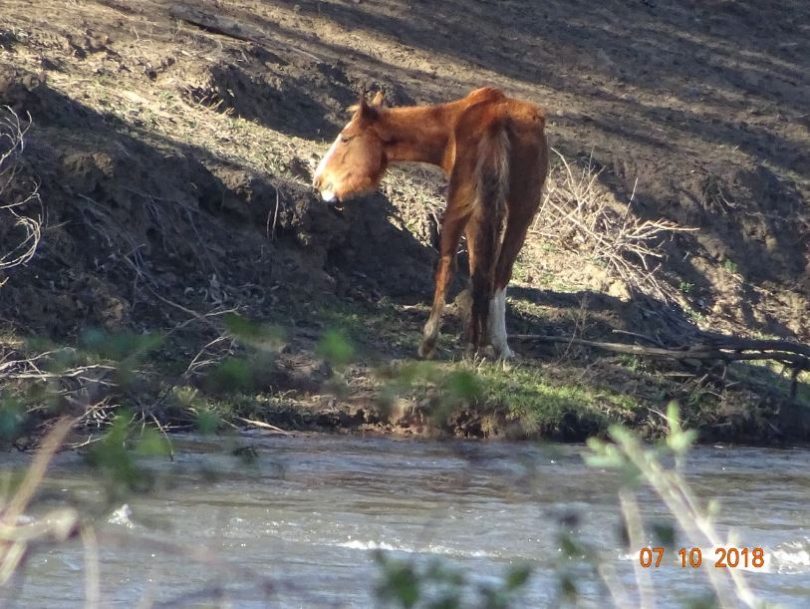
Photo: Alison Swain.
The Dalgety man who took photos of dead brumbies in the Snowy River says he was horrified at what he saw.
“As a reward for working hard all winter, I shouted myself a whitewater expedition down the river, really to learn more about the river and its Aboriginal heritage,” says Felix Hearn.
“What I didn’t expect to see was such a stressed and damaged environment and I didn’t expect to see so many dead brumbies.”
Mr Hearn has had a property at Dalgety for 15 years and lived fulltime in the region for the last seven.
“Until now I didn’t really have a particular interest in or follow the cause of the brumbies,” he says.
“I feel sorry for the horses, but I also saw the damage they do, there has got to be a better middle ground between the needs of the ecology and ecosystems of the park and the needs of the horses.”
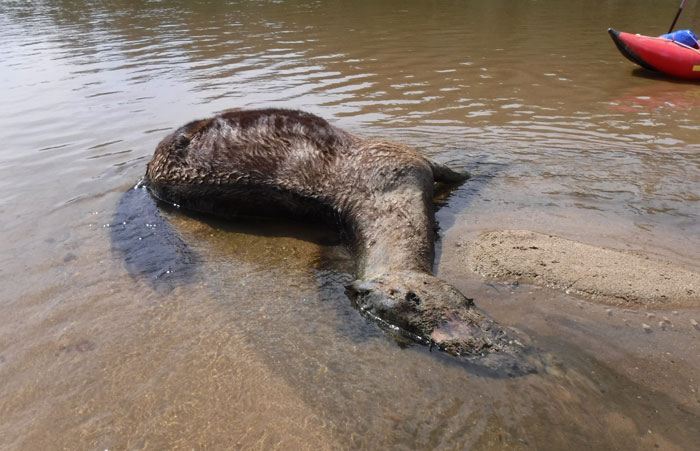
Dalgety’s Felix Hearn says he was shocked to find dead brumbies in the lower Snowy River earlier this month. Photo: Felix Hearn.
A spokesperson for the NSW Office of Environment and Heritage says, “The horse deaths were investigated by the National Parks and Wildlife Service.”
“An independent veterinary inspection confirmed the horses died of starvation due to the drought and that there was no evidence of human interference.
“The area is currently particularly dry and all animals in the area are under stress due to lack of water and feed.”
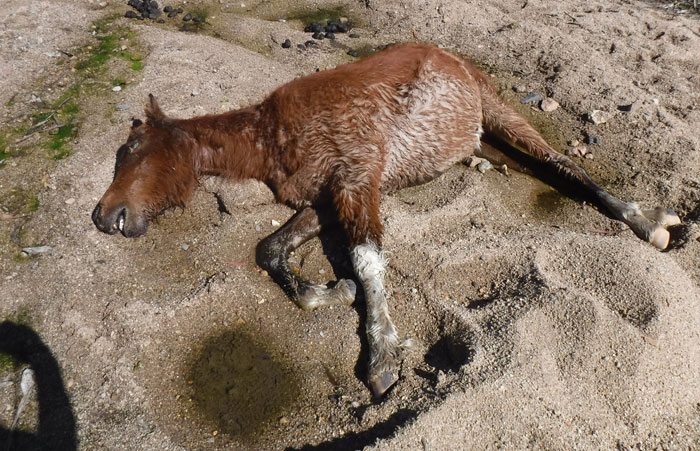
A spokesperson for NSW OEH says an independent veterinary inspection confirmed the horses died of starvation due to the drought. Photo: Felix Hearn.
Dr Andrea Harvey is a Veterinarian and PhD candidate at the University of Technology Sydney. She has been assessing the welfare of brumbies across the Victorian and New South Wales alpine areas and in the Blue Mountains.
Dr Harvey believes there is more than the drought at play, her camera traps in the southern end of Kosciuszko National Park show horses in distress before these drier, colder, harder times at the end of winter.
“I think this is what is happening down there all of the time,” Dr Harvey says.
“Even during the times of year when you would expect these horses to be at their best – during those summer months, even then in the lower Snowy over 50 per cent of the horses I was seeing were in really poor condition.
“And what people don’t perhaps consider is that welfare is not just about the brumbies’ body condition. Horses normally like to be in big herds and when there is lots of food around they will be – that’s what you would normally see at the northern end of Kosciuszko on the open grasslands.
“When there is less food available, like in the lower end of the park, you see herds break up and you see horses on their own, which is not how horses like to live, it changes their whole social structure and behaviour.”
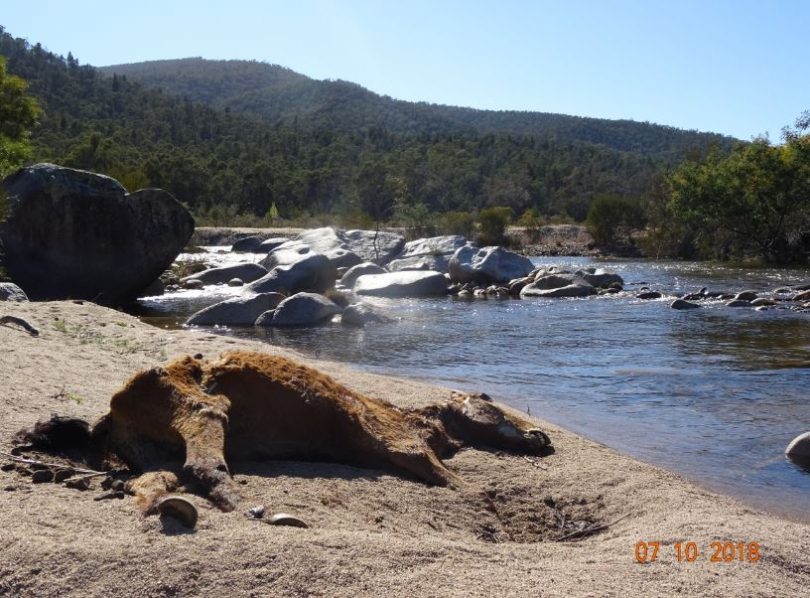
Pictures of dead horses and horses in poor condition have shocked many. Photo: Alison Swain.
Alison and Richard Swain run Alpine River Adventures, Mr Swain was the tour guide for Mr Hearn and others down the lower Snowy River earlier this month. The Swains are also feral horse campaigners with the Invasive Species Council.
“These horses are not in their natural habitat, they are in the Australian climate which is very harsh, we have droughts often and this is not something they are adapted to,” Mrs Swain says.
“These horses are trying to do the best they can in an environment they don’t belong in.”
Mrs Swain believes the best place for horses in Australia is in a paddock.
“They need to be looked after, they need to have vet checks, they need to be fed and have someone who looks after them,” she says.
“The Australian environment is not adapted to them either; both are impacting each other, its a two-way street.”

The NSW Government passed the Wild Horse Heritage Act in June, protecting the horses in Kosciuszko National Park because of their cultural and historic links to settler history. Photo: Alison Swain.
The Invasive Species Council is calling on the NSW Government to repeal the Kosciuszko Wild Horse Heritage Act and to put in place humane feral horse control methods.
“We’re now seeing the implications of protecting feral horses in the park. The animals are dying agonising deaths in the southern end of Kosciuszko,” Richard Swain says.
“Feral horses are also competing for scarce feed with our wildlife including wallabies, kangaroos and wombats, which are also suffering from the drought.
“Kosciuszko National Park was created to protect its incredible natural values. It’s a park, not a paddock, and must be managed as one of Australia’s most precious natural wonders,” Mr Swain says.
The NSW Government passed the Wild Horse Heritage Act in June, protecting horses in Kosciuszko because of their cultural and historic links to settler history.
The passing of the Bill broke an impasse on the issue and has reframed the debate.
At the time, NSW Deputy Premier and Member for Monaro, John Barilaro said, “Wild brumbies have been roaming the Australian Alps for almost 200 years and are part of the cultural fabric and folklore of the high country.”
“The heritage management plan will specifically prohibit lethal culling of the brumby, aerial or otherwise, and will identify those areas in the park where brumbies can roam without causing significant environmental harm,” Mr Barilaro said in late May.
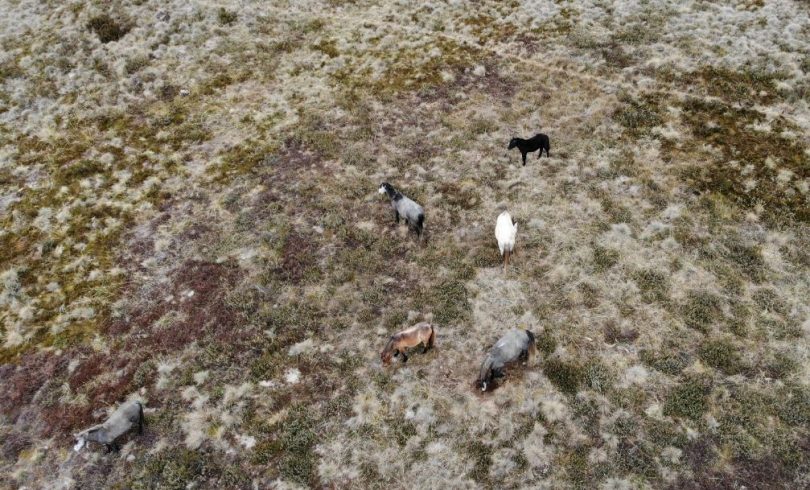
Brumbies at Currango Plains in the Kosciuszko National Park, May 2018. Photo: Supplied by John Barilaro’s office.
In August 2016, 41 Australian ecologists wrote to the then NSW Premier, Mike Baird calling for a rapid reduction in wild horse numbers in Kosciuszko.
“Horses are stock animals recently introduced and are not characteristic of this area, but threaten ecosystem processes, ecosystems, and species that are characteristic,” the letter said.
“Horses are not compatible with the primary goal of nature conservation in a national park.”
The group which spans 16 universities in Queensland, New South Wales, Australian Capital Territory, Victoria, and Tasmania, urged the NSW Government to keep best practice aerial culling on the table in order to support the conservation of native fauna and flora.
The concerned group of scientists suggested around 600 brumbies might be a more manageable number as opposed to the estimated 6,000 living in Kosciuszko in 2016 and stressed the need for a rapid decline in those numbers.
More recently the NSW Threatened Species Committee, which is appointed by the NSW Environment Minister pointed to 23 plant species and eight animal that were “likely to be adversely affected by feral horses,” including the Southern Corroboree Frog, Guthega Skink, Alpine Spiny Crayfish, and Mountain Pygmy Possum.
“Habitat damage in streams, wetlands and adjacent riparian systems occurs through selective grazing, trampling, track creation, pugging (soil compaction), wallowing, [and] dust bathing leading to stream bank slumping and destruction, stream course disturbance and incision and sphagnum bog and wetland destruction,” writes Committee Chair, Dr Marco Duretto.
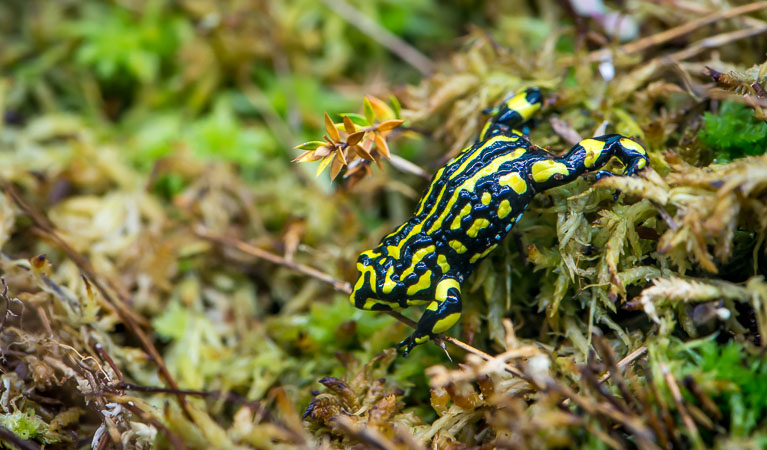
Southern Corroboree Frog withing Koscusizko National Park. Photo: NSW National Parks.
After seeing Mr Hearn’s photos this week, Mr Barilaro remains confident the government’s plan is a good balance.
“Under our plan where there are issues or concerns around public safety and importantly the health and wellbeing of a horse, such as starvation, then there is space for intervention.”
“An advisory committee is due to be formed soon and that will provide expert advice, the actual management will fall under the responsibility of the National Parks and Wildlife Service.”
Mr Barilaro says the advisory committee will provide the way forward and will represent a range of different stakeholders to work through the data, look for new data, and look for new control methods.
Dr Harvey says good science is key to finding a solution to this vexed issue and is concerned politics and emotion have clouded the discussion and made it difficult for people to engage.
“Its hard for the public to know what to really believe,” she says.
“We have a duty to try and do something about this suffering and ultimately I think that means having a reduced population in the Alps.
“I was shocked at what I found, people just aren’t aware of the suffering going on, especially in the southern end of the park.
“Most of the photos of healthy brumbies we see come from the northern end of the park where there are more open grassy plains and more feed.”

Brumbies at Currango Plains in the Kosciuszko National Park, May 2018. Photo: Supplied by John Barilaro’s office.
Dr Harvey who has helped rehome brumbies to her property in the Southern Highlands understands and feels the discomfort around aerial culling.
She doesn’t support mass culling events but believes when there is a need to kill particular horses, in some landscapes across the Snowy Mountains, when done correctly, shooting from a helicopter can be a quick death with the least impacts on animal welfare.
“I think numbers need to be reduced in some regions from an animal welfare perspective, and animal welfare science can inform what the most humane and feasible methods are for any given situation,” she says.
Felix Hearn says he’ll be paying a lot more attention to the issue in the future.
“We have put this environment into a desperate state, and it’s not just horses, but rabbits, pigs and deer as well,” he says.
Original Article published by Ian Campbell on About Regional.












